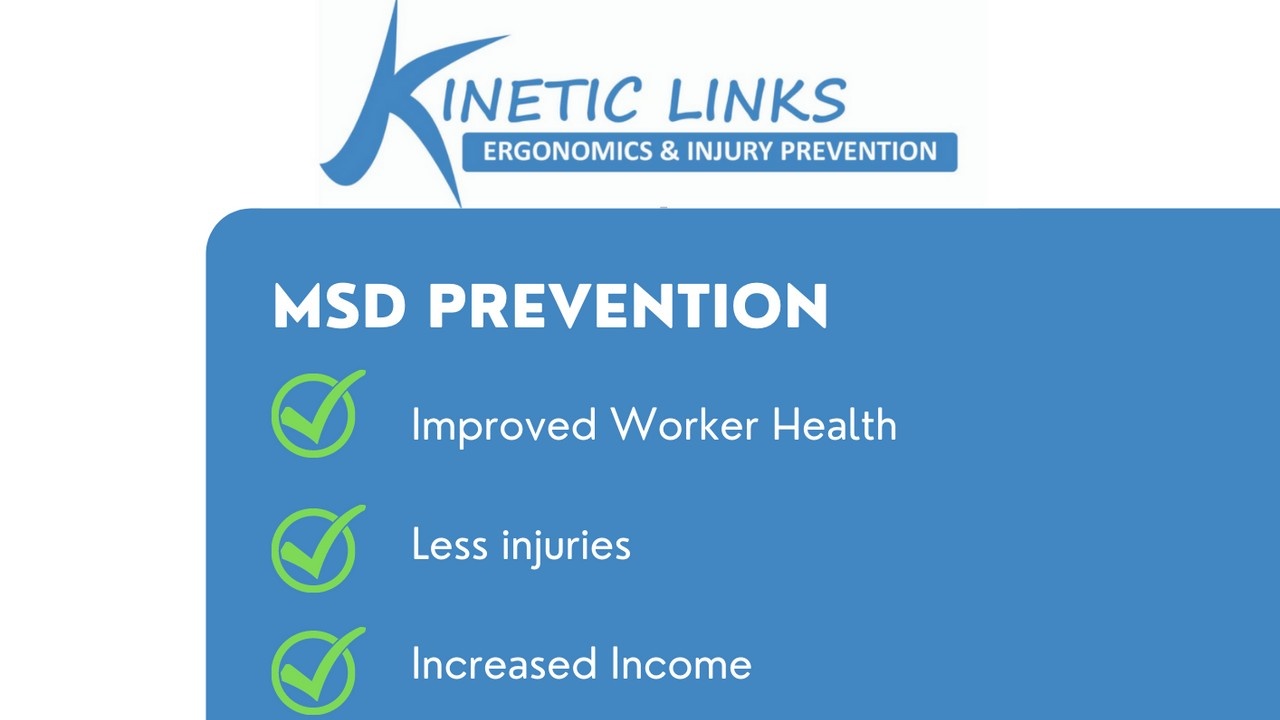Musculoskeletal Disorders and Prevention
Sep 20, 2021
What are musculoskeletal disorders?
Musculoskeletal disorders (MSD) are injuries/disorders of muscles, bones, tendons, ligaments, and even nerves. Some well-known MSD are carpal tunnel syndrome, low back pain, tennis elbow, and trigger finger, although there are many more in addition to these.
The symptoms of MSD are dependent on the type and location of the injury. However, some common symptoms are pain in movement, swelling, reduced range of motion, stiffness, etc.
Some common hazards in the workplace that may cause a worker to develop MSD are,
- High exertion of force
- Posture
- Repetition
- Vibration
- Local contact stress
- Cold temperatures
Over time, these hazards may take a toll on the body and cause injury.
Quick fact: The most affected area regarding MSD is the low back. Some work-related factors that can cause this MSD are lifting with the spine flexed or twisted, repetitive lifting, and sitting or standing on vibrating platforms.
MSD Prevention
The main goal of MSD prevention is to identify the root cause of an MSD hazard and implement changes to eliminate the hazard. If the hazard cannot be eliminated completely, the effect of the hazard should then be reduced.
The first step to MSD prevention is recognizing an MSD hazard. Once the root cause of the MSD hazard is recognized, the risk of this hazard needs to be assessed to determine if the hazard should be eliminated completely. If the hazard cannot be eliminated completely, controls should be added to reduce the risk of the hazard on the workers. And finally, the effectiveness of the implemented controls should be assessed, to determine if the controls are adequate at reducing the risk of injury.
Why is MSD prevention important?
Work should not hurt, and that is why it is important to have an MSD prevention program in place so that injuries can be prevented, and MSD hazards can be managed.
Workers may experience pain, fatigue, and injuries if there are MSD hazards present, which is why it is important for MSD prevention to be implemented so that the risk of injury is decreased. As well, pre-existing injuries/conditions may be aggravated from work, so it is important for an MSD prevention program to be in place. Additionally, work should be fitted to the worker rather than the worker having to adjust themselves to the work, as this can cause MSD. For example, a tall worker may have to bend down frequently for a task, and over time they may fatigue and develop an injury.
Not only is MSD prevention beneficial for workers, but it also benefits the company. If MSD hazards are present, the worker may be affected, causing fatigue or injury, which can then lead to poorer quality of products or services, as well as errors.
References
Centre of Research Expertise for the Prevention of Musculoskeletal Disorders. (n.d.). About MSD. https://www.msdprevention.com/About-MSD.htm
Centre of Research Expertise for the Prevention of Musculoskeletal Disorders. (n.d.). Prevent MSD. https://www.msdprevention.com/Prevent-MSD.htm
Mia DiFelice
Stay connected! Register below for email updates (monthly). To inquire about services now, schedule a 15 minute inquiry call, or email [email protected] with your request.
Stay connected with news and updates!
Join our mailing list to receive the latest news and updates from our team.
Don't worry, your information will not be shared.
We hate SPAM. We will never share your information, for any reason. Emails are sent on average 1/ month (or less)

